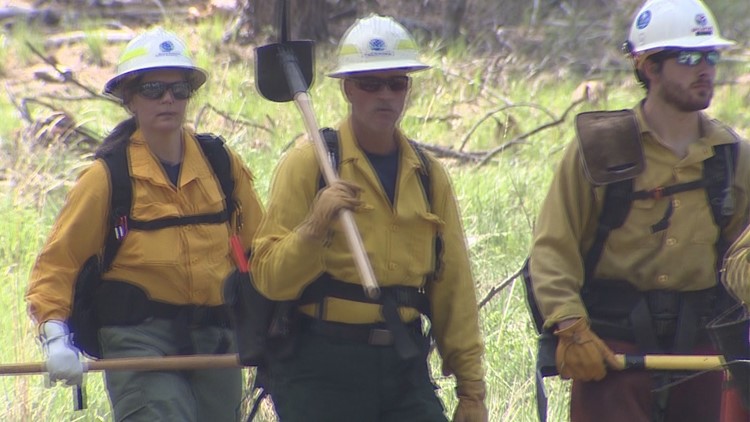Firefighters worry this wildfire season could be especially volatile. More than 2.7 million acres in Eastern Washington are at high risk and we're only six weeks into the summer wildfire season.
The plan is to reduce that risk by burning off or cutting away dead, flammable debris on the forest floor.
Forest managers do what's called prescribed burning, usually in the spring and the fall, where the debris on the forest floor is burned off in a controlled fashion, without burning the bigger trees.
WATCH: Managing wildfire danger
Flammable material is also removed mechanically, with the help of chainsaws and grinders. All this dead and downed debris is fuel for forest fires. When it dries out over the summer, it becomes like gasoline in the forest.
Burning it off used to happen naturally for millions of years. Wildfire was considered a natural part of the western landscape. Native Americans had long-known this and also deliberately burned thousands of acres to create a more open forest with more grasses and much less brush and low hanging and dead branches. Today, the debris and low-hanging branches often result in fires that can destroy even the strongest and oldest trees.
"Because our fire season is getting longer and larger," said Hilary Franz, Washington's Commissioner for Public Lands. "It's going to take all of us, it's going to take every agency."
Under what's called the 20-Year Forest Health Strategic Plan, there is more joint training and cooperation between wildfire agencies. The plan started four years ago under Franz's predecessor Peter Goldmark, when record fires burned hundreds of homes in Eastern Washington.
Our worst fires are called megafires, burning 100,000 acres or more. The 238,000-acre Yacolt Burn of 1902 in southwest Washington held the title as the state's largest recorded wildfire for 112 years. Then in 2014, the Carlton Complex fire took the title for worst wildfire. But the 2014 record fell the following year with the Okanogan Complex Fire, a collection of connected fires which grew together and killed three firefighters.
"It's not newsworthy that they get big," said Paul Hessburg, a landscape ecologist with the U.S. Forest Service in Wenatchee. "What's newsworthy is that they're increasing in frequency."
Hessburg studied historic fire behavior in seven western states, including large sections of Washington, Oregon, Idaho, Wyoming, Montana, Nevada, and California. He and a team of hundreds of researchers looked at aerial photographs taken early in the 20th century, and compared the makeup of vegetation between those photos and ones taken over the last 20 years. The images show the change from patchy forests, partially burned by natural fires, to a much more continuous canopy of unbroken forest more vulnerable to catastrophic fires.
The 20-Year Forest Health Plan calls for treating 1.2 million acres with prescribed burning and thinning over the next 20 years, about 70,000 acres a year. But Hessburg says we need to do more.
"It's a drop in the bucket. Right now, the thinning and burning treatments can be marvelously useful. What's needed is the social license to be able to do those treatments on a scale that matters."
For Hessburg, that means living with the smoke from controlled fires, in order to avoid the massive amounts of smoke coming from the uncontrolled fires.
Franz says the plan to treat 1.2 million acres is an effective step. The legislature allocated $13 million through July of 2019 to get it started.



